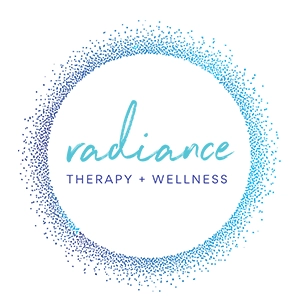The need to be heard in our healing process is both true of individual healing and of collective healing. On that note, I want to first acknowledge this week’s holiday and honor that many Native people do not celebrate the arrival of settlers on this land, as it is a day that reminds them of the genocide of their people. I want to send the message that I, and many others, hear them, that we are listening.
I honor their practices and wisdom, their stories, and all the spirits of those who were killed by early European settlers. I honor their descendants and the traumas they have carried and experienced individually and collectively, including the erasure of their suffering from the collective memory of this country.
I honor tribal sovereignty and the rights of indigenous peoples to self-governance and self-determination. I honor their humanity and their dignity and pray that more people in this country will seek to repair the wrongs that were done through acts of cultivating capacity for empathy, listening, sharing, and love.
As we ponder this past and present trauma perhaps we can ask ourselves: How do we make amends for what took place? And, how can we live a life that honors the sacred and that demonstrates reverence for the natural world and all beings?
These questions are a great transition into considering how healing our own trauma and feeling listened to ourselves can spill over and serve as a way toward mending relationships to indigenous people and their trauma. Because we are all made of the same “stuff” (we are stardust!), if we genuinely felt heard and our individual traumas were healed (or in the process of healing), we would find it hard to harm others. Our own experience of healing strengthens our ability to attune with others.
Strengthening Attunement
In Thomas Hübl’s book Healing Collective Trauma he discusses the distinction between listening and attunement. Hübl states: “I may be able to hear and cognitively process everything you share with me… but unless I have… developed consciousness structures (such as those facilitating empathy), I may be unable to receive you wholly or holistically. My nervous system needs to be free for this work.” What I understand Hübl to be saying is that by tending to our own suffering we naturally strengthen our ability to empathize with others. This creates more freedom in our nervous system and in turn helps us to have compassion and empathy for other peoples’ suffering.
Cultivating Self-Empathy by Attuning Inwardly
Being heard by a non-judgmental, compassionate person is profound and healing. I imagine that many of you have had at least one experience of this, where you were able to share all parts of yourself, your shadows and your light. This non-judgmental and compassionate person can also be ourselves and it is an important part of the healing process. For our inner “parts” or inner “children” to sense the love and empathy from the wiser, adult part of ourselves. To heal, you must be heard (or attuned with) by your own self as well as by others. If this concept doesn’t quite make sense or feels foreign to you, I invite you to try this exercise:
1. Grab a pen and a piece of paper or a journal.
2. Find a quiet space where you won’t be interrupted.
3. Sit in a comfortable position where you can relax.
4. Take a few deep breaths, sensing the breath in your belly and chest.
5. Internally, ask yourself if there is a part of you that feels neglected; a part/inner child that has a need that is not being met.
6. Wait to see what comes into your consciousness. Trust what is revealed to you and notice what that inner child/part looks like. What age are they? What are they wearing? What is their fascial expression? How is their posture? What does the environment they are in look like? What is their mood?
7. Take a moment to just BE with that part.
8. Now, invite your wise, most evolved self to come into your awareness. What are they wearing? What is their fascial expression? How is their posture? What does the environment they are in look like? What is their mood?
9. Take a moment to BE with your wise, most evolved self.
10. Once you have a good sense of both parts start a conversation between them. Have your wise self start the conversation by writing down a question they want to ask the inner part that is struggling. Here are some ideas for a starting question: What do you need right now my love? I love you, how can I support you right now? You look sad (or whatever emotion you sense is present: anger, grief, etc), do you want to talk about your sadness (other emotion)?
11. Give your inner child/part a moment and see what he/she/they want to say in response; write down their response. Note: I like to use one hand to write out my wise self questions/responses and the other hand (non-dominant hand) to write the inner part/child’s voice. You can do what works well for you.
12. Continue this back and forth conversation through writing until the inner part/child feels fully heard, senses you have attuned to them, and they feel complete.
I use this practice when free-write journaling doesn’t quite do the trick or get to the core of what is going on inside of me. I invite you to make it a practice if you feel it will serve your healing.
Lastly, if you want a more structured system of support for this process, you can buy my RADIANT Seven-Step Process PDF download here. And, as always reach out with any questions!
I wish you the best as you continue to attune with your own body and needs.
*Image credit: Priscilla Du Preez

